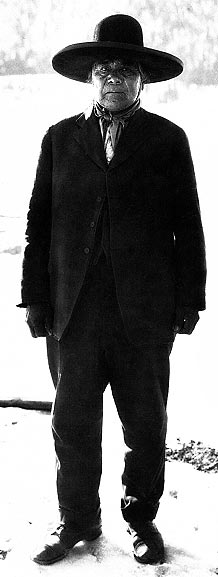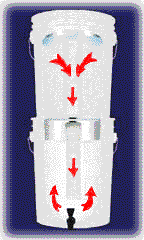The incubation period is 3-15 days; most common is 5-6 days. Classic Dengue
has symptoms of fever, chilly sensation, severe headache, nausea, severe
bone and joint pain. Dengue Hemmorrhagic Fever has the same symptoms as the
classic form, also with internal bleeding and shock. If the patient survives
the infection, it causes a sensitization instead of immunization.
Classic Dengue virus infects approximately 1 million people per year; 15%
of the infections progress into Dengue Hemorrhagic Fever. It is an arbovirus
that is transmitted by Aedes Aegypti. All infections are from a mosquito
vector. There was no threat of the virus in the United States until 1985,
when a shipment of tires from Japan arrived that contained stagnant water
harboring the larvae of the Asian Tiger mosquito, which could withstand frost.
Ebola
The first recorded outbreak was July 1976 in the South Sudan. Second outbreak,
September 1976, Zaire. On November 15, 1996, there was an outbreak for which
the diagnosis was confirmed and reported by the Associated Press on
November 16, 1996. The patient died approximately one week later; forty people
who were in contact with the infected person were under observation at the
time of this report.
The incubation period is 2-21 days. Symptoms: severe headache, fever, muscle
pain, internal hemorrhaging. The virus contains proteins that mimic the proteins
found in the coagulation pathway which causes the coagulation cascade to
begin. As a result all clotting factors are used up. The spleen and liver
harden into a clot. Kidneys clog and fail. The heart becomes overworked.
Blood leaks from every orifice and into the intestines, lungs, stomach, eyes,
and beneath the skin. The mortality rate is 50-90%; the cause of death is
usually heart failure, congestion, or shock. This is a blood-borne disease,
and the vector and/or natural host is unknown.
Links:
Crisis
in a Hot Zone
Ebola Outbreaks --
Updates
Occurrences of
Ebola
Hantavirus
The deadliest United States outbreak was on May 14, 1993 in the Four Corners
area. Incubation is similar to Yellow Fever. Symptoms include mild onset
with flu-like symptoms that rapidly progresses into kidney failure with
intestinal bleeding (which is the hallmark of the disease). The most common
symptom in the United States is hypertension with chronic kidney failure.
In the Four Corners outbreak, the disease had a very mild onset with flu-like
symptoms, developing into lung hemorrhaging causing the infected person to
suffocate in his or her own blood. The mortality rate varies with the strain;
the most deadly strain had a 62.5% mortality rate.
Transmission is from animal to human. Over 63 bird and rodent vectors have
been identified for the 70 known strains of the virus. Scientists have concluded
that the outbreak in the Four Corners area was due to a ten-fold increase
in the population of the deer mouse and not to a virus mutation.
Links:
All About
Hantavirus
Bunyaviridae
Four Corners
Hantavirus
The Hantavirus
Hantavirus
Pulmonary Syndrome
Hepatitis
Viral hepatitis is a disease caused by a virus that inflames the liver. The
disease may manifest itself as either an acute or chronic illness, depending
on the duration of inflammation. Acute viral hepatitis is characterized by
symptoms that may include: fever, nausea, vomiting, loss of appetite,
dark-colored urine, jaundice.
Typically, acute cases subside as the body's defenses overcome the virus,
and the symptoms do not recur. In chronic viral hepatitis, the virus remains
in the body after the initial symptoms subside. Often, the infected person
may not experience any symptoms. Nonetheless, the liver remains chronically
inflamed, increasing the risk of cirrhosis or liver cancer.
Hepatitis A: Often caused by consuming contaminated food or water. Produces
only acute hepatitis. Sometimes called infectious hepatitis, although all
viral hepatitis is infectious. Vaccine is available and recommended before
travel in some parts of the world.
Hepatitis B: Spread in numerous ways including sexual contact, blood products,
and contaminated needles. May produce a severe acute hepatitis but only about
5 percent to 10 percent develop chronic hepatitis. Readily preventable by
vaccination.
Hepatitis C: A blood-borne virus first identified and successfully tested
for in 1989. It is most often transmitted by intravenous drug users sharing
contaminated needles. Once infected, few become acutely ill, but up to 90
percent develop a chronic infection and 20 percent of those chronically infected
individuals develop cirrhosis of the liver. May be identified by a simple
blood test, but no vaccine is currently available.
Hepatitis D: A person must be infected with hepatitis B to acquire this disease.
Symptoms similar to hepatitis B.
Hepatitis E: Similar to hepatitis A: acute rather than chronic. Very unusual
in the U.S. Has produced large outbreaks in Asia and South America.
Hepatitis F: Appears to produce a type of hepatitis similar to hepatitis
C. But scientists are not yet certain it is a separate hepatitis virus.
Hepatitis G: Newly identified. Probably transmitted in a similar fashion
to hepatitis C. Scientists are unsure of its impact or how often it produces
chronic symptoms or liver disease.
Links:
The ABCs (and DEFGs)
of Viral Hepatitis
Hepatitis B
Hepatitis Developments
Hepatitis Weekly
HepNet: The Hepatitis Information
Network
HFI Home Page
Lassa
The first recorded outbreak was in American nurses in Nigeria in 1969. There
was an outbreak in the United States in 1989; the victim was a man from Chicago
who had been visiting his mother, who was dying of Lassa. Currently, there
are approximately 5,000 deaths per year in West Africa.
The incubation period is from 7-21 days. Symptoms include muscle aches with
mild fever, nausea and vomiting, diarrhea, severely bloodshot eyes and painful
rash caused by subdermal hemorrhage, mucus membrane involvement where all
tissues become painfully inflamed and begin to bleed. The mortality rate
is 70%. Transmission is through Mastomys matalensis (common brown
rat).
Links:
Lassa
Virus
Marburg
The first recorded outbreak was in August 1967, Marburg, Germany at the Behring
Works, a vaccine-producing company. The incubation time is from 7-21 days.
Symptoms include muscle aches with mild fever, nausea, vomiting, diarrhea,
severely bloodshot eyes and painful rash caused by subdermal hemorrhage,
mucus membrane involvement where all tissues become painfully inflamed and
begin to bleed. Ten days after onset, the victim begins to vomit and defecate
blood. The mortality rate is 25%. There is a possibility that it is airborne;
however, that has not been proven.
Links:
Marburg and Ebola
Viruses
Virus Information Links
Infectious
Diseases Conference: Listen to National Public Radio's Program of March
13, 1998.
Books
The
Coming Plague
by Laurie Garrett
A
Dancing Matrix: How Science Confronts Emerging Viruses
by Robin Henig
Deadly
Feasts
by Richard Rhodes
Dictionary
of Epidemiology
by John Last, J. Abramson
Ebola:
A Documentary Novel
by William T. Close
Encyclopedia
of Plague and Pestilence
by George C. Cohn
Everything
You Need to Know About Diseases
by Marcia Andrews
Plagues
and Peoples
by William McNeill
Virus
X: Tracking the New Killer Plagues
by Frank Ryan
Yellow
Fever, Black Goddess
by Christopher Wills


























